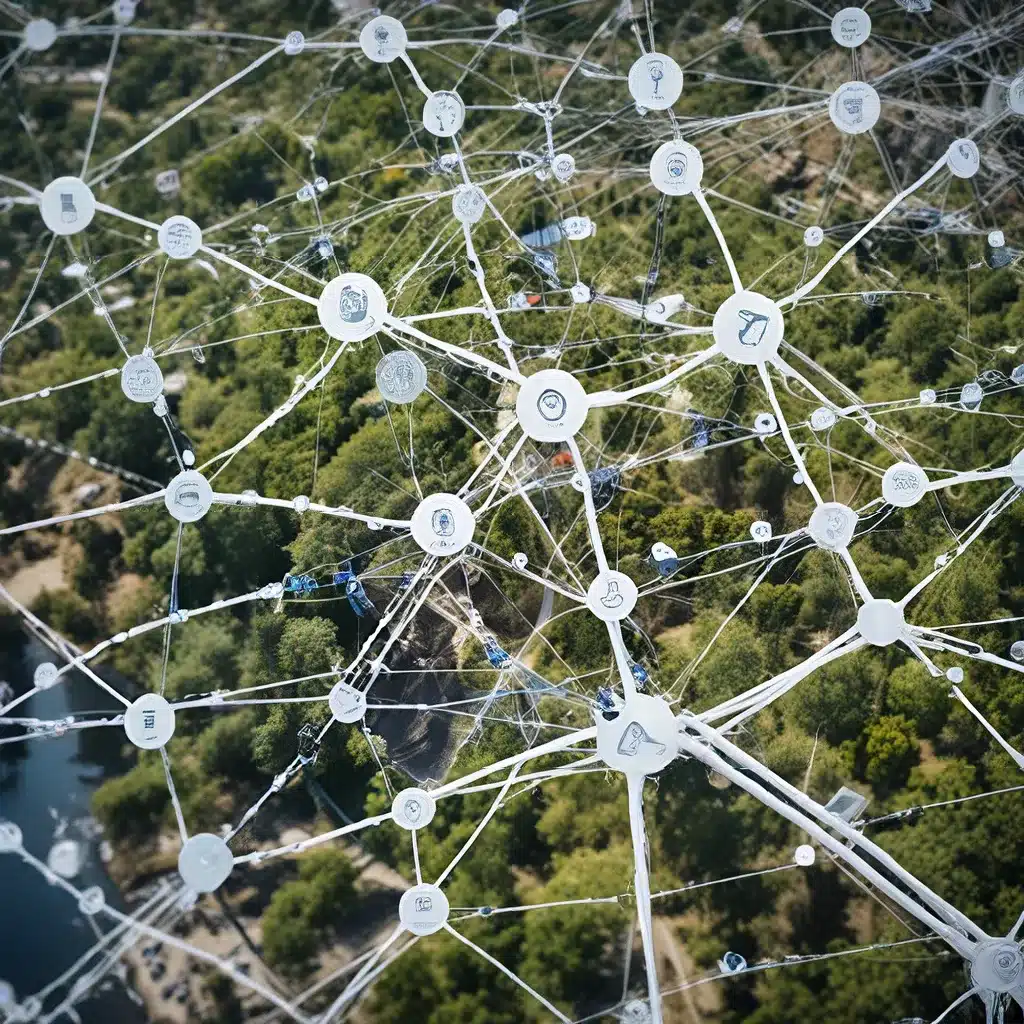
Unlocking the Potential of Sensor Networks in the IoT Era
In the rapidly evolving world of Internet of Things (IoT), sensor networks have become the backbone of a vast array of innovative applications, from smart cities and industrial automation to environmental monitoring and healthcare systems. As the IoT ecosystem continues to expand, ensuring the resilience and adaptability of these sensor networks is crucial for unlocking their full potential and delivering reliable, secure, and energy-efficient solutions.
Designing Resilient Sensor Network Architectures
At the heart of a resilient sensor network lies a well-crafted architecture that can withstand a variety of challenges, from environmental factors to cyber-attacks. One key aspect of this is the choice of network topology, which can significantly impact the network’s ability to maintain connectivity and data flow in the face of disruptions.
Recent research has explored various network topologies, such as star, mesh, and cluster-based designs, each with its own strengths and weaknesses. For example, star topologies are known for their simplicity and centralized control, but they can be vulnerable to single points of failure. In contrast, mesh networks offer redundancy and self-healing capabilities, but they can be more complex to manage.
To address these trade-offs, hybrid and adaptive network architectures are gaining traction, allowing sensor networks to dynamically reconfigure themselves based on changing conditions or requirements. By leveraging machine learning and artificial intelligence techniques, these advanced sensor network designs can optimize their performance, ensure fault tolerance, and adapt to evolving needs.
Securing Sensor Networks Against Cyber Threats
As sensor networks become more prevalent in our daily lives, the importance of cybersecurity cannot be overstated. IoT devices, which often serve as the sensing nodes in these networks, are increasingly vulnerable to a wide range of cyber threats, from malware and data breaches to unauthorized access and denial-of-service attacks.
To safeguard sensor networks against these threats, a multifaceted approach is required, encompassing both hardware and software security measures. Secure boot, hardware-based encryption, and trusted execution environments are just a few examples of the hardware-level security features that can be incorporated into sensor nodes.
At the software level, secure communication protocols, authentication mechanisms, and intrusion detection systems play a crucial role in protecting the integrity and confidentiality of sensor data. Additionally, edge computing and fog computing architectures can help decentralize the processing and storage of sensor data, reducing the attack surface and enhancing the overall security posture of the network.
Emerging research in blockchain and distributed ledger technologies has also opened up new possibilities for secure and transparent sensor data management, enabling tamper-resistant data storage and decentralized access control.
Optimizing Energy Efficiency in Sensor Networks
One of the key challenges in sensor network design is energy management, as sensor nodes are often battery-powered and deployed in remote or hard-to-reach locations. Inefficient energy consumption can lead to premature node failures, disrupting the overall network reliability and coverage.
To address this challenge, researchers and engineers have developed a range of energy-efficient strategies, including low-power hardware designs, duty-cycling mechanisms, and energy harvesting techniques. Energy-aware routing protocols and data aggregation methods can also help minimize the energy consumption of sensor nodes by reducing the amount of data that needs to be transmitted.
Innovative solutions such as energy-harvesting sensors, which can extract energy from their surroundings (e.g., solar, thermal, or kinetic energy), are poised to transform the power management landscape for sensor networks. By leveraging these renewable energy sources, sensor nodes can become more self-sustainable and less reliant on traditional battery-based power supplies.
Harnessing the Power of Sensor Networks in IoT Applications
As sensor networks continue to evolve, their applications in the IoT realm are becoming increasingly diverse and impactful. Smart cities, for example, are leveraging sensor networks to monitor and manage various urban infrastructure systems, from traffic and waste management to energy and water distribution.
In the industrial sector, sensor networks are enabling predictive maintenance and optimization of production processes, while in the healthcare domain, they are revolutionizing remote patient monitoring and disease prevention strategies.
Environmental monitoring is another area where sensor networks excel, providing real-time data on air quality, water levels, wildlife populations, and natural disaster early warning systems.
Across these diverse applications, the resilience, security, and energy efficiency of sensor networks are critical factors in ensuring the reliability and scalability of the IoT ecosystem. By addressing these key design challenges, sensor network experts are paving the way for a future where interconnected and adaptable sensor systems unlock unprecedented opportunities for innovation and societal transformation.
Sensor-Networks.org is committed to fostering this evolution, serving as a hub for cutting-edge research, industry insights, and educational resources related to the design, deployment, and management of resilient sensor networks in the ever-evolving IoT landscape.